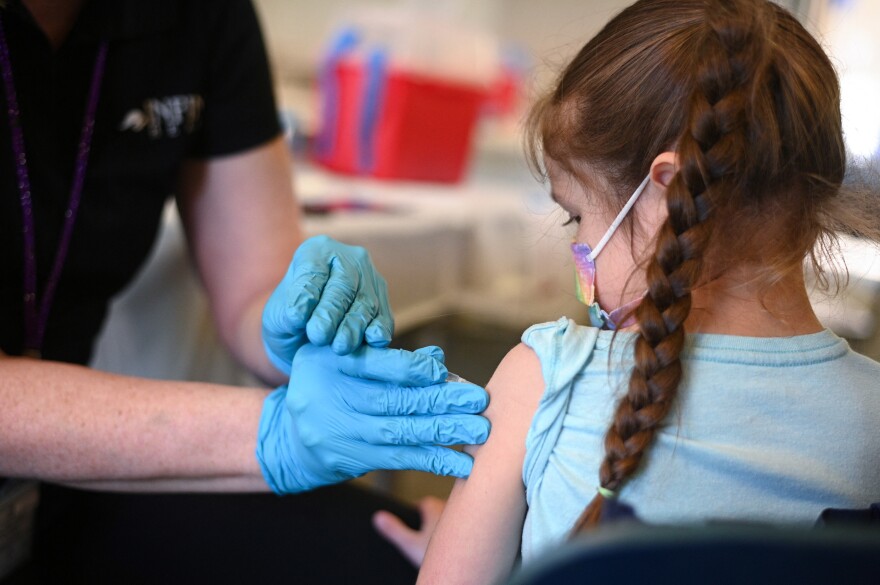The rate of childhood vaccinations dropped sharply during the pandemic. Disrupted schedules and a fear of exposure kept many people away from the doctor’s office. But barriers to vaccination predate the pandemic, meaning for some populations, COVID made the problem worse.
Elise Albers is the Population Health manager for OSF HealthCare Children’s Hospital of Illinois. She said working families often struggle to find time to take children for scheduled vaccines because medical offices tend to operate during normal business hours. It can be difficult to schedule the necessary time off work, especially if a family has multiple children.
Families in rural areas may struggle to regularly access health care because of the distance, Albers said. And some families may be dealing with vaccine hesitancy, especially in light of the pandemic. OSF is working to help families overcome these barriers though outreach and the use of mobile clinics.
“What we want to do is make it easy for families to access care and to get vaccines, and also come to trust that we're there to keep them healthy,” Albers said for WGLT's Sound Health series.
To do so, OSF is taking a high-tech approach.
The OSF Innovation Design Lab is using data and artificial technology (AI) modeling to help identify locations with low childhood vaccination rates. Design Lab Director Scott Barrows said the approach relies on a human-centered design that combines technology with empathy.
“It's not just going out in the mobile van and giving out vaccines. It's understanding reasons why people might be hesitant, or barriers to getting vaccinated,” Barrows said. “It’s understanding and actually listening to the communities that are most vulnerable.”
Mobile clinics aren’t new to health care, Albers said. But leveraging data in deciding where and how to deploy them is. “What is really innovative with what we're doing is in the approach — how we are using data and technology to identify where there are clusters or hot spots of under-vaccinated or unvaccinated children,” Albers said.
For that arm of the project, OSF is getting help from Illinois State University’s School of Information Technology that is building a vaccine management system to help target vaccination efforts for underserved communities.
The project has gotten a boost from recent grant funding. It was awarded $25,000 through the U.S. Department of Health & Human Services after winning the Promoting Pediatric Primary Prevention (P4) Challenge, a nationwide competition to increase pediatric vaccination rates and well-child visits.
Albers said OSF hopes continue building trust with communities by providing health care opportunities beyond traditional office visits.



